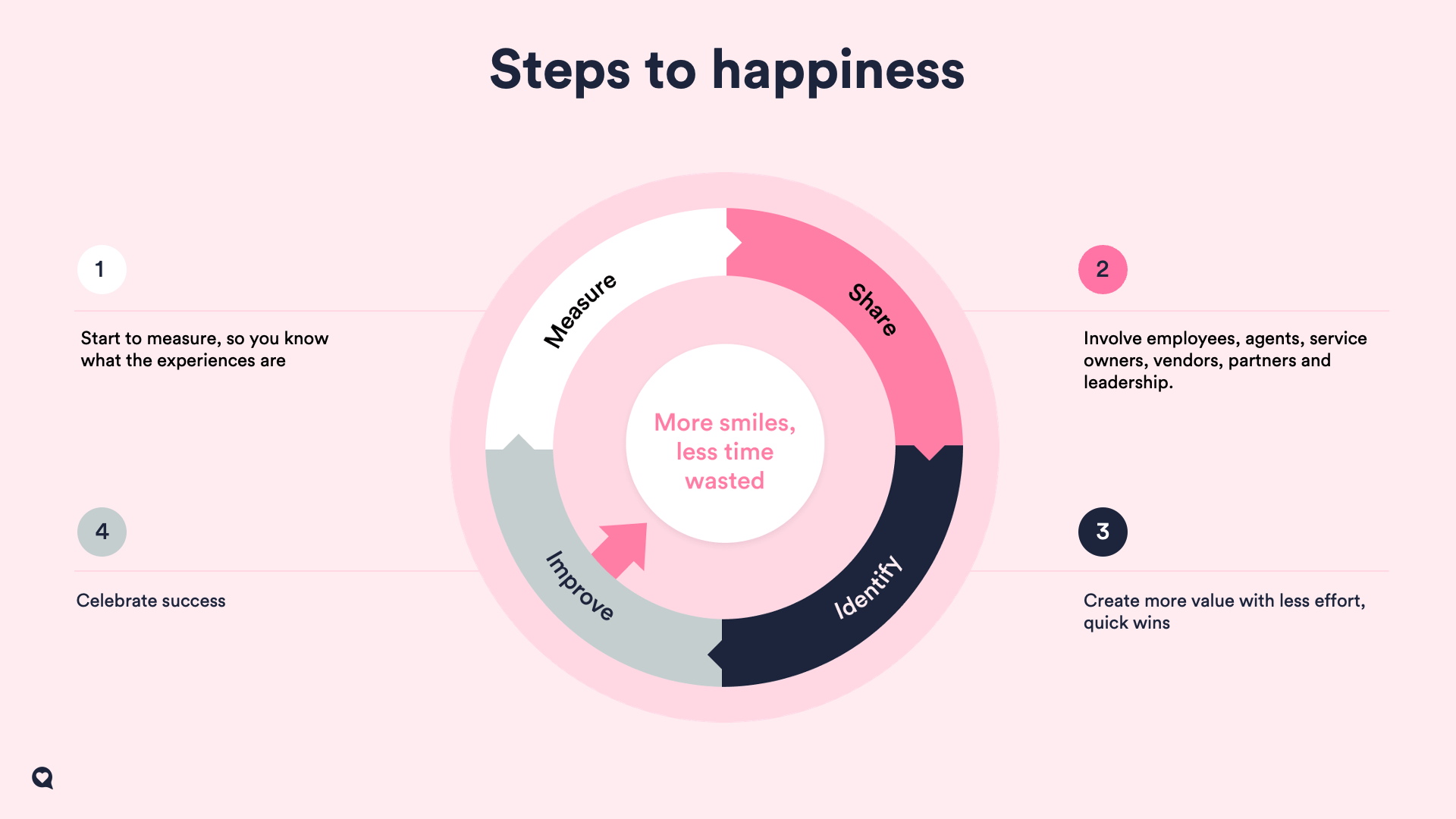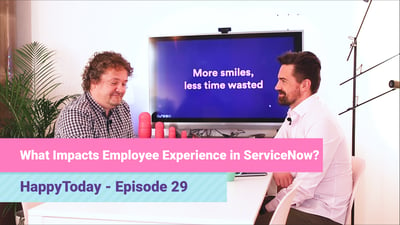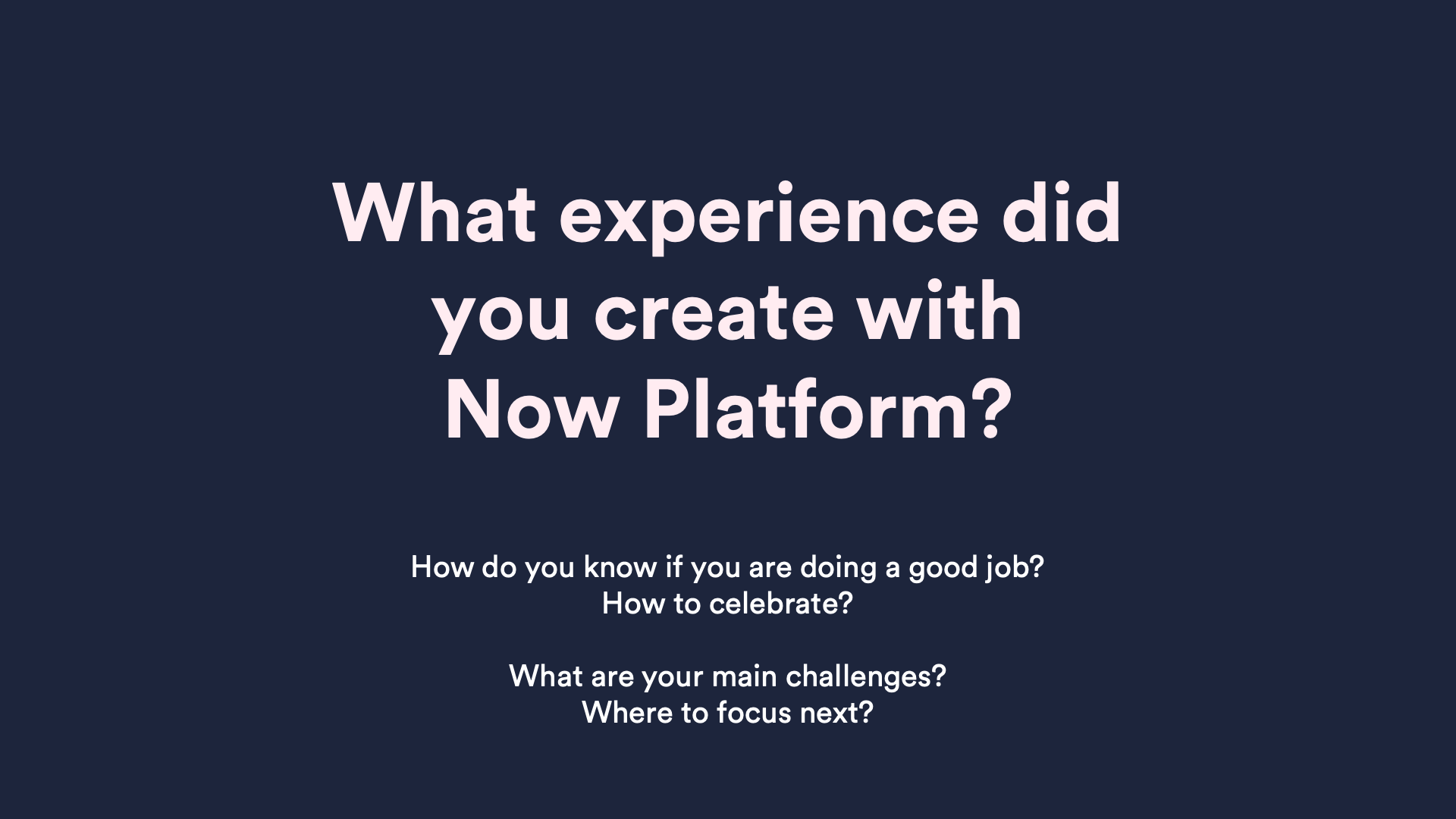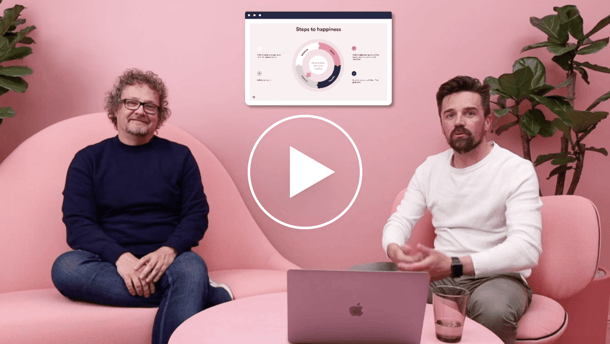Instead of spending all your time in IT only updating versions and enabling features, use Continuous Experience Management to listen to how your end-users feel about them. Use that Experience Data to guide you towards the areas that most need fixing, giving focus to your ServiceNow development efforts.
So next time someone asks you “What did you create with your Now Platform?”, you could say something like “We saved 15 minutes for end-users each time they log a ticket!”
Now, that would be worth celebrating!
Maximize your Now Platform with Continuous Experience Management

We believe a Continuous Experience Management model with the four steps of Measure, Share, Identify, and Improve will enable you to make the most of your Now platform.
Always start measuring before any changes, not after. Before renewing your portal or enabling certain new features, for example, you should first measure the baseline. Sharing the Experience Data openly with your IT team even before they embark on improvement efforts will give them visibility of what is working fine and what needs fixing. Then, they can focus on brainstorming fixes for the areas that need attention.
For example, you can measure how end-user experience changes each time a ticket reassignment happens. Based on the latest results from our H1/2021 Global IT Experience Benchmark Report, you will likely see that when tickets are reassigned more, end-user happiness reduces while lost time increases.
In your own company context, you might find that frequent ticket reassignments happen especially with specific types of incidents or requests. Your IT team can then improve their service by finding ways to reduce ticket reassignments in those areas, such as by directing certain types of tickets immediately to the relevant team, skipping unnecessary intermediate steps.
Make Experience the metric your IT team is accountable for
From the CIO’s perspective, this Continuous Experience Management approach also allows you to make your IT department accountable for improving the end-user experiences created through the Now platform. With full visibility of real-time Experience Data on HappySignals for both CIOs and IT teams, measurable targets can be set for improving end-user happiness and productivity.
I believe IT team members will also be more motivated if they are given the opportunity to use technological solutions like ServiceNow to create real impact for end-users!
In this week’s episode of Happy in 15, Sami and I hear from Ex SVP of Customer Success at ServiceNow, Jimmy Fitzgerald, about what CIOs and IT executives care about when using ServiceNow. We also discuss how Experience Management and HappySignals help you to leverage your ServiceNow platform.







